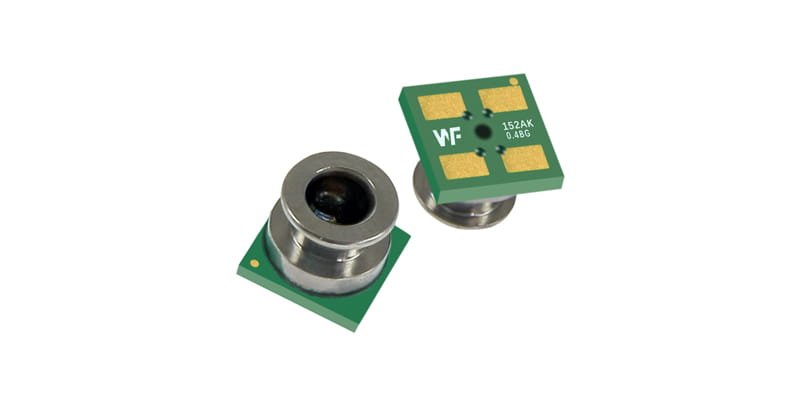A gauge sensor measures pressure relative to atmospheric pressure. Common packages include SMD, pin-through-hole DIP and versions with nozzle fittings. Built on MEMS piezoresistive or capacitive designs, these devices excel at detecting minute pressure differentials. They suit systems that need multi-range pressure sensor options, striking a balance between sensitivity and stability.
Katalog
Wichtige Spezifikationen und Erkennung von Pakettypen
Gauge-pressure sensors stand out on several critical metrics: zero offset, linearity, hysteresis and temperature behaviour. The uploaded image shows typical package types: flat SMD, small DIP and versions with a nozzle. MEMS piezoresistive or capacitive diaphragms give high sensitivity to small pressure differences. The mechanical design of the thin diaphragm sets the resolution and range; the internal wire bonds and pad layout affect mounting and thermal pathways. Getting these physical details right is the first step in choosing the right device.

Signalaufbereitung und Datenzuverlässigkeit
Gewährleistung der Genauigkeit von analog bis digital
Catching tiny pressure changes depends on quality signal conditioning: low-noise amplifiers, differential measurement, low-drift references and suitable ADCs. Choosing the right gain boosts resolution but can amplify noise; filter design needs to balance response speed against smoothing. Factory calibration and temperature compensation circuits significantly cut zero drift, keeping measurements linear and low-hysteresis across the operating temperature range — this improves traceability and overall data reliability.
Mehrbereichsauswahl und technische Kompromisse
Balancing range, resolution and dynamic response
Multi-range pressure sensors cover applications from micro differential pressure up to moderate pressures, but you must weigh trade-offs: a narrow range offers better resolution and lower zero drift; a wide range brings robustness and broader applicability. In practice you can use parallel sensors of different ranges or programmable gain amplifiers to get the best of both worlds. System design should account for maximum pressure shocks, long-term zero stability and the noise floor of the signal chain to land on the right mix of performance and cost.
Integration auf Systemebene und praktische Überlegungen
PCB interfaces, EMC and environmental robustness
During integration, PCBA ports and the gas path directly influence readings: inlet tubing length, damping and sealing can introduce delay or leakage error. Package materials and processes determine environmental tolerance, while solid shielding and grounding practice reduce EMI effects on microvolt-level signals. Selection also needs to consider solderability, pick-and-place compatibility and maintenance access so the sensor can operate reliably in the system over time.
Validierungsmethoden und Qualitätskontrolle
Testabläufe, die die Produktionskonsistenz sicherstellen
To ensure sensitive detection of small changes, build a full validation flow: zero and full-scale checks, linearity curve measurements, hysteresis and repeatability tests, temperature ramp trials and long-term drift assessments. In volume production, use statistical monitoring of key parameters, sampling inspection and process capability analysis, and adjust manufacturing or selection criteria promptly to keep each batch performing reliably.
Abschluss
Gauge sensors offer advantages in zero offset, linearity, hysteresis and temperature adaptability. Paired with proper signal conditioning and multi-range strategies, they can precisely detect tiny pressure changes. Device mechanical design, interface execution and validation processes together determine final system measurement performance.
Die obige Einführung kratzt nur an der Oberfläche der Anwendungen der Drucksensortechnologie. Wir werden weiterhin die verschiedenen Arten von Sensorelementen untersuchen, die in verschiedenen Produkten verwendet werden, wie sie funktionieren und welche Vor- und Nachteile sie haben. Wenn Sie detailliertere Informationen zu den hier besprochenen Themen wünschen, können Sie sich die entsprechenden Inhalte weiter unten in diesem Handbuch ansehen. Wenn Sie unter Zeitdruck stehen, können Sie auch hier klicken, um die Details dieser Leitfäden herunterzuladen PDF -Daten des Luftdrucksensorprodukts.
Weitere Informationen zu anderen Sensortechnologien finden Sie hier Besuchen Sie unsere Sensors -Seite.


